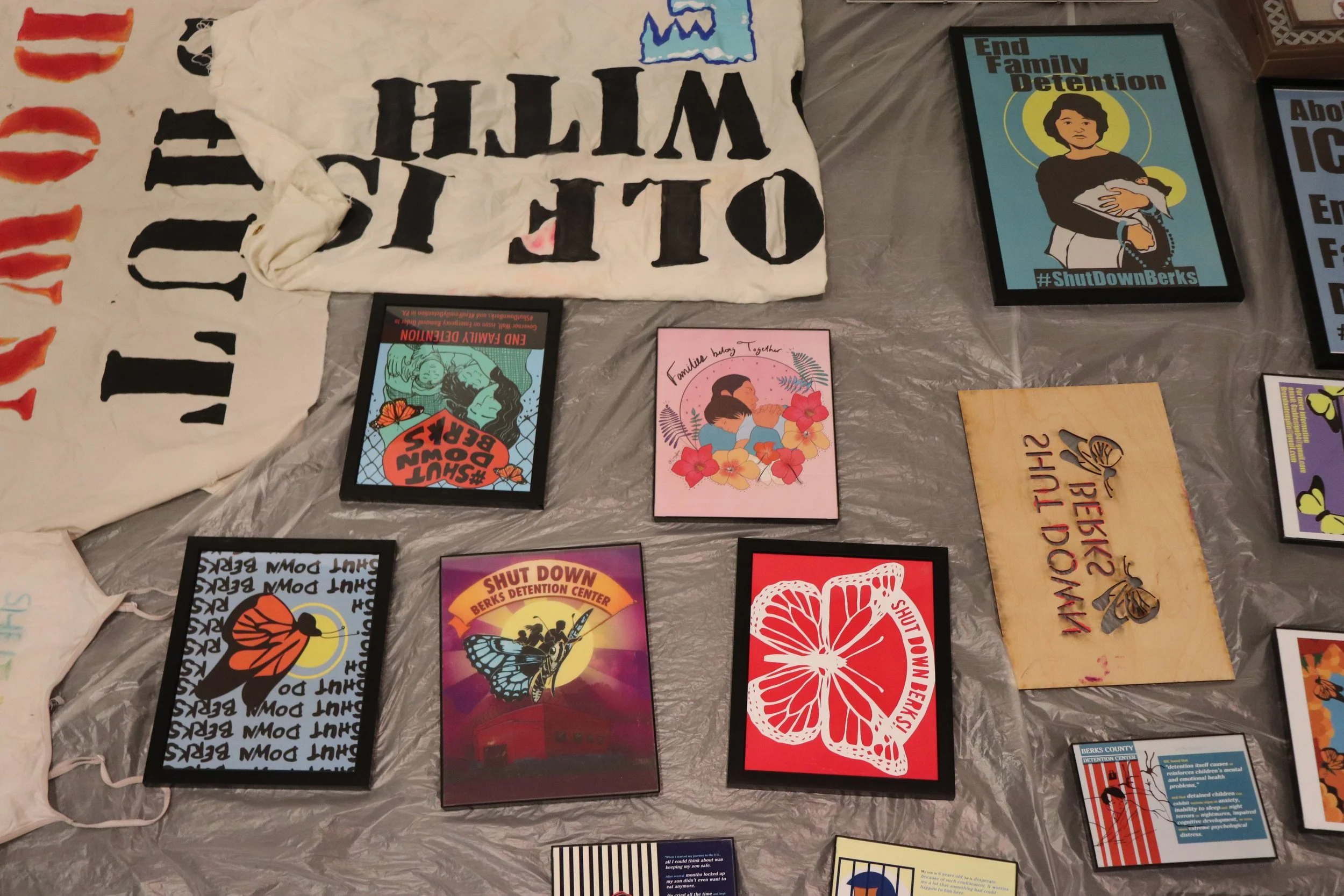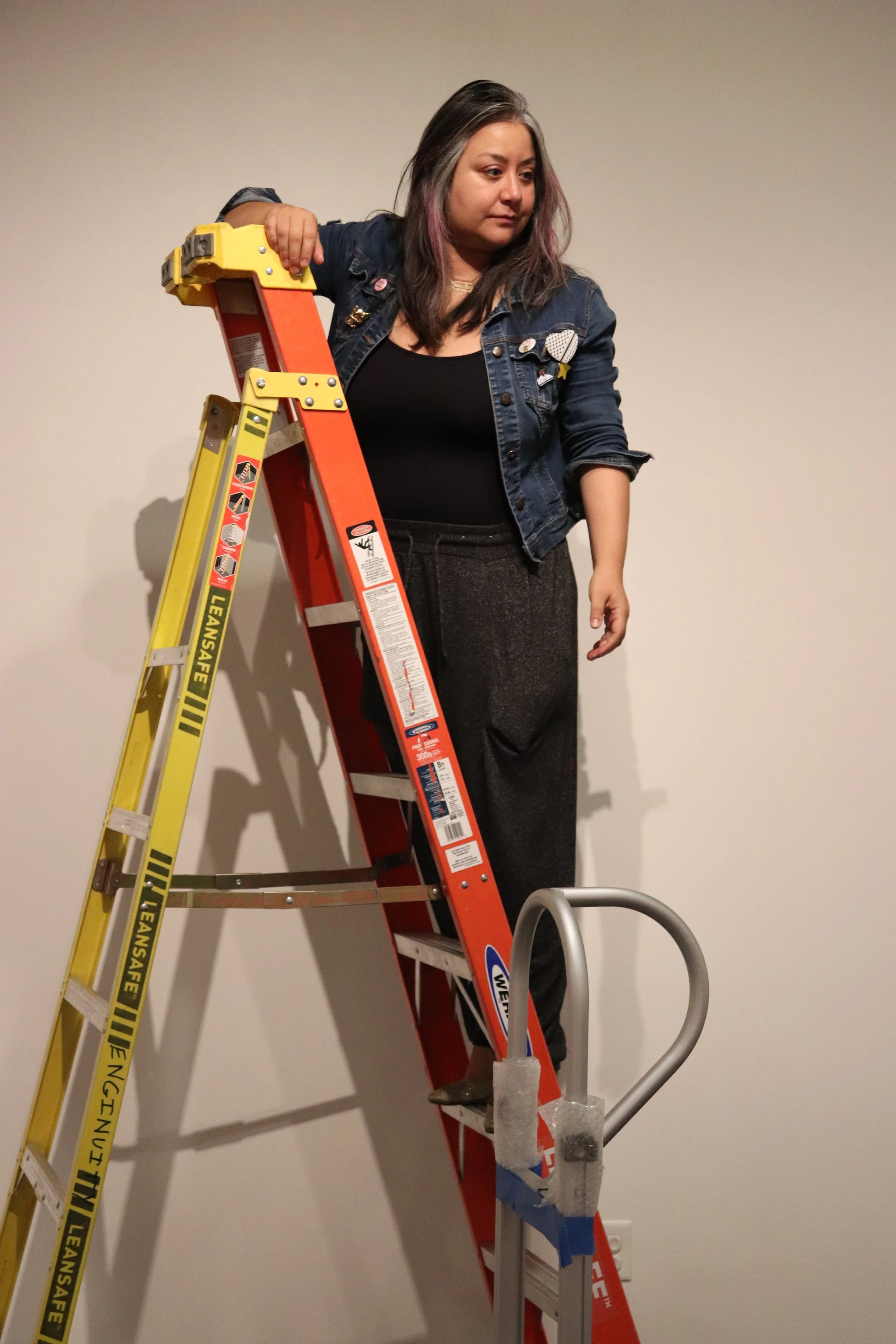JASMINE
RIVERA
FELLOW
Meet UnMapping Fellow Jasmine Rivera. Since 2009, Jasmine has been community organizing in the Philadelphia area. She’s worked on campaigns such as the passage of the Philadelphia Paid Sick Leave bill & ending police/ICE collaboration in both Philadelphia and Norristown. Most recently she celebrated the closure of the Berks County Detention Center as one of the co-founders and coordinators of the Shut Down Berks Coalition. She is currently the Chief of Staff at Pennsylvania Voice. A two-time Leeway Foundation Art & Change Grantee, she curated the art exhibit “Queremos Justicia: How We Shut Down Berks.” She is working on a book and further exhibit on the Berks closure (presented in both Spanish and English) to address the “dire need to not only document but celebrate our victories.”
COLOR
AND CALM
“A piece of art that I have carried with me from home to home since meeting her in college is The Flaming June. The first time I saw her I was struck by the gorgeous orange, how intense and vibrant the color is, and how the light and shadows of the fabric are exquisitely painted. All of this contrasted by how peaceful and serene she is, asleep in this somewhat vulnerable curled up position in what appears to be a warm or tropical land. She's been an inspiration for not only beauty but also rest in my life, which is why she can always be found in my bedroom.”
JASMINE RIVERA BY DEJAH MCINTOSH

SITTING DOWN WITH jasmine
*
SITTING DOWN WITH jasmine *
UnMapping fellow, activist, and curator, Jasmine Rivera, met with Writers Room staff, Lillian Fenzil, at the Susquehanna Art Museum in Harrisburg, PA to discuss her gallery, Queremos Justicia: How We Shut Down Berks.
Edited for Length and Clarity
Jasmine, this is an absolutely beautiful exhibition with artwork that’s dated from years ago. How long have you been working on this?
I first put this exhibit together in the beginning of 2023. We successfully shut down the Berks County Detention Center on January 31st, 2023. So, we had a victory party with community members, organizers and most importantly, folks who were formally detained in a detention center, on February 1st. And after recovering from the victory party, I got to work on planning this exhibit and was able to open the first iteration of it in May of 2023.
That’s epic! Did you have experience with gallery curating before this or was this something you decided to pick up to best show off this work?
I had zero experience curating before this.
Wow, what was the trickiest part?
I would say the trickiest part of putting the show together was writing the history. That was always my intention— to write the history of the organizing. What did we do as a coalition? What was our strategy, who were the targets? Why [did] we implement the tactics that we did? I always wanted to make sure that that history could be written to accompany the art. So that we're holding both. Writing that history was definitely very emotional. Of all the moving pieces I would say that was the trickiest part.
I can imagine! Why did you choose to do it as a gallery rather than a website or something like that?
Over the years, as folks can see when they come to the exhibit, you can see that there are a lot of parts by a lot of people. And I distinctly remember in 2018, we had a whole group of artists who were just supporting the campaign in lots of different ways. As we were all actively resisting, you know, the Trump administration and demanding our Democratic governor to take action and shut down the prison And I just distinctly remember, you know, being with these artists and telling them, “I'm so sorry, there's no money to pay you because all of us are volunteers. I'm a volunteer.” And since 2018, it has always been a dream of mine to be able to showcase this beautiful art that they made for us. And I do it in person because honestly, that is what we did in the campaign, right? Our most powerful actions in this campaign were done in person, were done in community because we are stronger as a community. And so being able to hold a physical space where folks can experience this in the real world, but also experience this with others really gets to the heart of organizing.
Yeah, and being in here and seeing all the different art -- you can tell the individual styles; I saw your daughter has some art in here, it really does come together very well. So where did UnMapping come into play with all of this?
Ooh, UnMapping, yes. I would say a big, a big part of this exhibit—really the one and only thing that I make a requirement no matter where I take this exhibit to (you know, we've had it in small spaces, we've had it in professional galleries, we've had it in a community center for an immigrant rights organization in Connecticut)— my number one thing is that the art made by the families is in the center. And that the audio from the documentary where these families are talking about their experiences and naming what they want to see happen regarding this facility is plain in the space, so visitors can literally hear the voices of former incarcerated families.
To me, the UnMapping comes in, not only documenting the history of the organizing, but also making sure that we are documenting the power of these families, of these mothers, of these fathers, of these children, of all the organizing and all the resistance that they did.
With all your experience, from this gallery to talking with you over lunch, it’s clear that you are familiar with social justice spaces. What was it like discussing this knowledge with your fellow UnMappers in such an intergenerational cohort?
It was really wonderful to be able to be in a space with folks who are not necessarily doing social justice work as their day job, but as part of their daily practice. This has been my career. I have been very, very lucky and fortunate to be able to be a community organizer to then be a coordinator, a trainer, a facilitator for other folks at social justice organizations. I have a lot of privilege in that respect, and to me, it's really important to always be hearing and learning from the folks, not only in the movement, because we do this work for our communities, for our people. And if we are not listening and always learning and having a learning mindset of others, then that's where we stop growing and we stop evolving.
So, being able to be with the other fellows who are brilliant--they're all so, so brilliant and are working on such amazing projects--and being able to see, you know, how they were approaching their projects was really inspiring to think of different perspectives and different takes on how to do this exhibit and to frame the book that I am working on, and vice versa. I know that all of us got to learn from each other. And so, it was really fantastic to get connected with bad-ass people in Philadelphia.





That’s awesome! I’m so glad everyone got the chance to work together and learn from each other in this process. So, this exhibit opens next week? And it’ll be open through November, right?
Yes, it will be, it's open from August 31st to November 3rd.
Great! I’ll try to make it back here again to see everything on full display. What’s next for you after this?
After this is a break.
That makes total sense.
Yeah, this is my fourth showing, three of which happened this year. I also co-curated a different show in Philadelphia that opened July 4th, so I'm definitely looking for a little bit of a break, but I am hoping in 2025 to bring the show to one or two more places before archiving and making sure that we can have this art and history accessible for future students, activists, scholars to learn from. So, that's my goal at the end of 2025: archive time.




